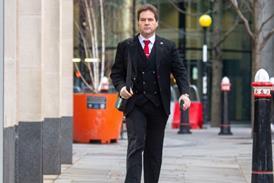It seems like only yesterday that Lord Justice Jackson delivered his ’Fixed Costs – The Time Has Come’ lecture to the Insolvency Practitioners Association. But it was way back in January 2016. The intervening 18 months have led to much speculation and concern in the legal world.
Back then, LJ Jackson reiterated his recommendation from his final report. A switch to fixed costs for all claims would be a step too far for the profession in the short-term. ’Reform is best done incrementally, so that we can see how it is working out … It is therefore appropriate to move on to fixing costs in the lower reaches of the multi-track,’ he said. But he was still open to moving to a universal fixed costs regime once we’d seen how this approach worked.
In his speech he set out ’The grid’, containing the substance of his proposals then, split into four bands, one applying to claims where the sum in issue is between £25,000 and £50,000, therefore encompassing a large number of multi-track claims and three bands applying to larger claims up to a ceiling of £250,000. The grid figures included counsel, but excluded other disbursements and the costs of enforcing any order and VAT. The costs of claims above £250,000 were to be controlled by means of costs management.
Those proposals were seen as many as still going too far. But I and others have been focused on advising clients wishing to prepare for inevitable changes firmly along these lines. Nonetheless, I have long been forecasting a range for fixed costs of £25,000 to £100,000, operated through an intermediate track and with process changes.
Now J-Day is here. We have the conclusions of LJ Jackson’s ’Review of Civil Litigation Costs – Supplemental Report Fixed Recoverable Costs’. Things aren’t anywhere near as bad as they could have been – and much more in line with my predictions.
The supplemental report has adopted a balanced approach. However, the changes will still have as big an impact in civil costs as those implemented back in April 2013. The balance is perhaps illustrated by the departure from fixed costs in business and property cases, by capping costs instead at £80,000 in claims up to £250,000. This will ease concerns about fixing costs in cases up to this limit, the figure which was repeatedly mentioned by LJ Jackson when referring to the lower reaches of the multi-track. He explains his new proposals will ease the concern of SME’s surrounding litigation they typically are involved in.
On the other hand, fixed costs have indeed been proposed in cases between £25,000 and £100,000, operating through an intermediate track for cases which can be tried in three days or less, with streamlined procedures – for example no more than two expert witnesses giving oral evidence on each side. The ‘grid’ approach to fixed recoverable costs (FRC) will apply for all fast track cases, with a separate grid for the new intermediate track.
The report singles out clinical negligence costs and LJ Jackson recommends that the Department of Health and the Civil Justice Council should set up a working party, including both claimant and defendant representatives, to put together a clinical negligence specific process for handling claims up to £25,000. This should include a grid of FRC. This scheme will capture most clinical negligence claims. LJ Jackson suggests this should be straightforward if stakeholders come together, and he gives noise induced hearing loss claims as an example of how it can work. The appointment of a working party to address this vexed question makes good sense.
On judicial review cases, the report concludes that if qualified one-way costs shifting (QOCS) is not to apply, capped costs in case proceeding under the Aarhus Convention, which is a United Nations Economic Commission for Europe (UNECE) treaty which provides for access to information, public participation in decision making and access to justice in environmental matters, should be adopted and extended to all judicial review claims. Tailored costs management should be available at the discretion of the judge in heavy claims of this type.
For all the balance of LJ Jackson’s proposals, let’s not beat around the bush, these are significant changes. They will bring more process changes, more amendments to the rules and practice directions, more opportunities for the ingenious to exploit the new provisions, to sidestep the unwanted and embrace the desirable, depending on which side of the fence you operate from. This will all rest ultimately with the Civil Procedure Rule Committee, who will need to implement these with a steely eye on past experiences and practical considerations. Those in everyday practice must continue to be consulted to ensure potential wrinkles are ironed out and expensive satellite litigation is minimised – although some is inevitable as weaknesses in drafting are stress tested through the courts.
It is welcome that LJ Jackson concludes costs management has improved – particularly over the last 18 months – eliminating ’any need to develop FRC on the scale canvassed in my lecture of January 2016’. However, he still warns, ’the possibility remains of substantially extending FRC in the future, if the costs management process either fails to deliver effective control over costs or becomes unduly expensive’. There is no room for complacency. Further improvements in costs management will be essential if we’re to avoid the kind of measures that are still – just – being deemed as over the top.
We are all supping from the same poisoned chalice that LJ Jackson has been cradling for many years now. Only time will tell whether this will indeed kill disproportionate costs and aid access to justice, or simply add more toxicity to costs recovery and profitability, and drive further reactive changes.
Richard Allen is a leading costs lawyer at legal costs and pricing specialists Burcher Jennings. He is also a non-executive director of the Costs Lawyer Standards Board.


























No comments yet